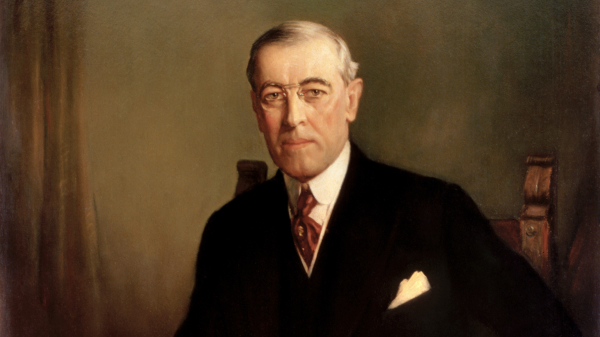In the early decades of the Cold War, it might have seemed inevitable that the Soviet Union and the People’s Republic of China—both powerful, socialist states—would remain close allies. Bound by Marxist-Leninist ideology and common opposition to Western capitalism, the two nations initially presented a unified front. Yet, by the late 1950s and throughout the 1960s, that solidarity unraveled. The resulting rift, known as the Sino-Soviet split, would reshape not just communist politics but the entire global order.
The story of this split is not one of betrayal or simplistic ideological rebellion. Instead, it is a lesson in how even shared principles can lead to divergent paths when filtered through different histories, leadership styles, and national priorities. As Russia and China today appear to be drawing closer once again, understanding why they drifted apart decades ago is more relevant than ever.
Common Beginnings: A Post-War Alliance Rooted in Shared1
In the aftermath of World War II, China and the Soviet Union found themselves ideologically aligned and strategically interdependent. The USSR had emerged as one of the world’s two superpowers, while China’s communist revolution, led by Mao Zedong, had succeeded in establishing the People’s Republic in 1949.
This ideological harmony culminated in the 1950 Sino-Soviet Treaty of Friendship, Alliance, and Mutual Assistance, which formalized their relationship. The Soviet Union offered substantial aid to China, including military support, technical expertise, and assistance with infrastructure and industrialization. Both countries viewed the Western capitalist bloc, led by the United States, as a common adversary. For a time, the alliance between Moscow and Beijing seemed not only natural but unshakable.
Ideological Fault Lines: Diverging Visions of Socialist Development
Despite the formal partnership, differences in interpretation of Marxist-Leninist thought soon surfaced. The most pivotal shift occurred under Soviet Premier Nikita Khrushchev, who in 1956 launched a bold initiative to “de-Stalinize” the USSR. In his now-famous “Secret Speech,” Khrushchev criticized the cult of personality surrounding Joseph Stalin and condemned the repressive excesses of his rule.
To Mao Zedong, this move represented a dangerous retreat. Mao admired Stalin’s firm leadership and saw Khrushchev’s actions as an ideological backslide—a watering down of revolutionary purity. Where Khrushchev envisioned a more moderate, reformist path for socialism that could coexist peacefully with capitalist nations, Mao believed that only relentless revolutionary fervor could bring about true socialist transformation.
These conflicting visions—radical revolution versus measured reform—set the stage for deeper distrust. Each side came to view the other as ideologically compromised. Mao accused the Soviets of “revisionism,” while the USSR regarded China’s approach as reckless and destabilizing.
The Struggle for Leadership: Two Giants, One Global Stage
Ideological disagreements quickly merged with geopolitical rivalry. Both the Soviet Union and China saw themselves as the rightful leader of the global socialist movement. For decades, the USSR had been the ideological and military backbone of the communist world. But China, buoyed by its own revolutionary success, aspired to become a new center of gravity—particularly among developing countries in Asia, Africa, and Latin America.
China positioned itself as a model for anti-colonial and agrarian-based revolutions, promoting a distinct path for socialist nations that diverged from the Soviet industrial model. Meanwhile, the Soviet Union, more industrialized and diplomatically established, continued to view itself as the vanguard of Marxist orthodoxy.
This competition played out in the realm of international influence. The two countries supported different revolutionary movements and governments, often undercutting each other’s efforts. The rivalry blurred ideological lines and created new tensions among emerging socialist states, many of which were forced to choose sides or attempt a delicate balance between the two powers.
Tensions on the Border: When Ideology Met Geography
Even more combustible than ideological disputes were the physical tensions that flared along the vast, shared border between China and the Soviet Union. While historical territorial disagreements had long existed—dating back to treaties signed under the Qing dynasty and the Russian Empire—these disputes took on a new urgency as the political rift widened.
In 1969, the tension boiled over into armed clashes along the Ussuri River, most notably near Zhenbao Island. These skirmishes, while limited in scope, revealed the depth of mutual suspicion. Both sides accused the other of encroachment and aggression, and military buildups along the frontier soon followed.
These conflicts underscored a broader reality: even among ideological allies, national sovereignty and strategic security remained paramount. The shared socialist identity could not override centuries-old geopolitical concerns. China’s pursuit of nuclear weapons—achieved in 1964—was also partly motivated by the desire to protect itself not only from Western powers but from the increasingly unpredictable relationship with its northern neighbor.
Ripple Effects: A World Transformed by Division
The Sino-Soviet split sent shockwaves through the global balance of power. The once-cohesive communist bloc fractured into competing factions. Countries like Albania and, briefly, North Korea aligned more closely with China, while others—including East Germany, Cuba, and later Vietnam—remained in the Soviet orbit.
This fragmentation weakened the ideological unity of global socialism, making it harder to coordinate efforts or present a united front in the Cold War. For non-aligned countries and liberation movements, the division created both opportunities and confusion, as they navigated the complex landscape of competing socialist patrons.
Perhaps most significantly, the split allowed the United States to implement triangular diplomacy—a strategic approach that capitalized on the division between Moscow and Beijing. In 1972, President Richard Nixon made a historic visit to China, opening diplomatic relations and shifting the Cold War’s strategic equation. For the first time, the U.S. could balance its diplomacy between two communist superpowers, driving wedges where previously there had been alignment.
Looking Back to Understand Today
While the Cold War is now history, the lessons of the Sino-Soviet split remain vital in understanding today’s evolving China-Russia relationship. In recent years, the two nations have engaged in increased cooperation—through joint military exercises, trade agreements, and shared positions on global governance. Yet, this cooperation is driven not by ideological unity, but by mutual strategic interests, particularly in countering U.S. influence.
Unlike the early Cold War alliance, today’s partnership is more pragmatic. Both governments maintain distinct political systems, foreign policy goals, and economic models. The legacy of the split lingers, reminding both sides that past alliances built solely on ideology can falter when national interests diverge.
Conclusion: Shared Ideals, Separate Paths
The Sino-Soviet split teaches us that ideological alignment does not guarantee long-term alliance. Political philosophy, while important, often takes a backseat to historical experience, leadership style, and national interest. The split was not a failure of socialism, but rather a demonstration of its plurality and flexibility, reflecting the diverse contexts in which it was practiced.
As the world once again sees increased coordination between Beijing and Moscow, history reminds us to view such cooperation through a nuanced lens. The past has shown that even the strongest alliances can falter when vision, strategy, and ambition no longer align.
References
- Vision [↩]




